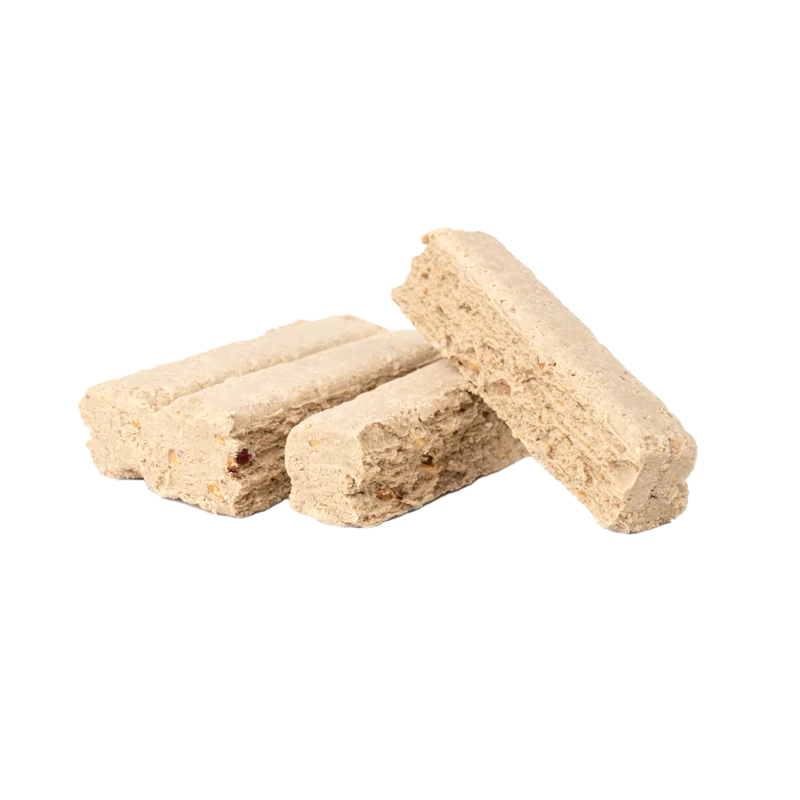Halva — Nutrients, Health Benefits, And Shopping Tips

Written by Listonic Team
Last update on September 4, 2024
Nutrition facts
Nutrition facts
Amount per 100 g
Calories
🔥 516 kcal
| Nutrition per: 100 g | Value | % Daily Value* |
|---|---|---|
| Carbs | 54 g | 19.64% |
| Fiber | 3 g | 10.71% |
| Sugars | 47 g | 94% |
| Glycemic Index | 70 | - |
| Protein | 13 g | 26% |
| Sodium | 50 mg | 2.17% |
| Total Fat | 31 g | 39.74% |
*The % of Daily Value (DV) tells you how much a nutrient in a serving of food contributes to a daily diet. 2,000 calories a day is used for general nutrition advice.
13 g
🧀 Good Protein Content
Did you know?
Health benefits
- Rich in healthy fats from sesame seeds (tahini), which provide energy and support heart health.
- Contains antioxidants, such as sesamin and sesamol, which help protect the body from free radicals and reduce inflammation.
- Provides essential vitamins and minerals such as calcium, magnesium, and iron, which support overall health and well-being.
- High in protein, making it a nutritious snack option for muscle growth and repair.
Health risks
- High sugar content which can contribute to weight gain, tooth decay, and increased risk of diabetes when consumed frequently.
- High fat content particularly in varieties made with sesame paste (tahini), which can contribute to increased calorie intake and potential weight gain if consumed in large amounts.
- High calorie content which can lead to weight gain if consumed frequently or in large portions.
- Potential for allergic reactions particularly in individuals allergic to sesame seeds or nuts, which are common ingredients in halva.
How to choose halva
Halva should have a crumbly yet moist texture, often speckled with nuts or seeds. It comes in light beige or brown colors, depending on the type. The texture should be uniformly soft without being overly sticky.
Do not purchase halva that is too hard or dry, as it indicates it's been stored improperly. Halva should be sweet with a slightly nutty flavor, making it a delicious treat or dessert accompaniment.

How to store halva
Halva should be stored in a cool, dry place. Keep it in an airtight container to maintain its texture and flavor. Properly stored, halva can last for several months.
Exposure to moisture can cause halva to spoil and lose its quality. It's important to keep it away from direct sunlight and humidity. Maintaining a consistent, cool environment helps preserve its rich, nutty flavor and texture.
✅ Extra Tip
How long does it last?
Halva can last for 6-12 months when stored in an airtight container in a cool, dark place. For longer storage, halva can be refrigerated, where it can last up to 1 year.
What to do with leftovers?
Leftover halva can be used in a variety of sweet and indulgent ways. Crumble it and sprinkle over ice cream, yogurt, or oatmeal for a nutty, sweet flavor, or use it as a filling for pastries or cookies. Halva is also great when mixed into baked goods, adding a unique texture and flavor to cakes or brownies.
Use halva as a topping for pancakes or waffles, where its richness complements the sweetness of the dish. If you have a lot of halva, consider making a batch of halva truffles by rolling pieces of halva into balls and dipping them in chocolate. Halva can also be blended into a spread for toast or crackers, or crumbled and mixed into granola or cereal bars. For a quick snack, enjoy halva on its own, paired with fresh fruit, or mixed into a smoothie for added sweetness and flavor.
👨⚕️️ Medical disclaimer
Discover products from other categories
Listonic Team
Fact-checked
Our editorial team checked this article to make sure it was accurate at the time of publishing it.
Get the top-rated shopping list app

halva
1 piece







